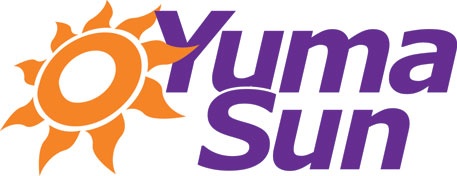
Yuma transportation issues in focus at forum
State legislators attending a transportation forum in Yuma Friday said area residents need to be part of the solution for coming up with the funding to fix and build roads and other transportation infrastructure, by making a solid case for spending state dollars, if not coming up with the money on their own.
“If you’re looking to the Legislature to solve your problems, you’re looking in the wrong place. You can solve your own problems by bringing pressure up,” said Rep. Noel Campbell, R-Prescott, a member of the House’s transportation committee. “And by that I mean we’re not going anywhere until we can get the governor on board. He’s got to strongly come out with leadership, give us directions. If he does that, and from the bottom-up or the swelling of support,” the change can come.
He added, “The truth of it is, the Legislature is not going to step out on its own, unless we have your support. And I mean that; I’ve preached that at every meeting.”
About 30 local government officials and other leaders gathered at the Pivot Point Conference Center Friday for the forum, which followed a bus tour of the San Luis ports of entry and other border areas, agricultural sites, Marine Corps Air Station Yuma and Yuma International Airport.
It will likely be the last in a series of “Accelerate Arizona” roadshows held by the Arizona Chamber of Commerce to highlight transportation’s role in economic development in different parts of the state, in the hope of attracting more public awareness and financing to the cause.
Three members of the Arizona House’s Transportation Committee were at Friday’s transportation forum, where Rep. Charlene Fernandez, D-Yuma, was joined by the Rep. Noel Campbell, R-Prescott, and the chair, Rep. Rick Gray, R-Sun City.
Yuma Mayor Doug Nicholls said he was gratified to see the legislators and others travel from other parts of the state to get local feedback.
“I always feel that Yuma is one of those communities that is not easily understood from the outside. So for you to put boots on the ground, make the effort to come out here, and tour the community, particularly the transportation side, I can’t express exactly how much that truly means to me,” he said.
A series of presentations detailed the importance of easy border crossing and dependable road systems to attracting new businesses to the region and helping existing ones grow. Much of the discussion centered on wait times at the older San Luis Port I, in the downtown, and the newer San Luis Port II for cargo, further east, where serial inspections by different agencies have led truckers and shippers to consider it unfriendly to business.
Luis Ramirez, a consultant for the city of San Luis, said U.S. Customs and Border Patrol is planning to sink significant money into improving the ports: $65 million at San Luis I, which handles more pedestrian traffic than any other crossing, and $30 million at San Luis II to expand it to accommodate passenger vehicles, along with the cargo.
Ramirez said the projects aren’t scheduled until 2019, however, and will take three some years to complete, so he urged the legislators and others to press the federal government to speed up the timeline. “If we wait until 2019, you’re looking at 2022 before the project is completed. That means seven more years of continued growth, of continued congestion,” he said.
Vic Smith, president of JV Smith Companies, said the region’s agriculture industry, with about 125,000 acres in Yuma County, 50,000 in Imperial County and 30,000 in the Mexicali Valley south of the border, also relies on dependable roads and quick processing at the border, particularly because their fresh vegetables have a shelf life of about 10 to 16 days.
Truckers will go some 50 miles out of their way if wait times at Calexico are shorter, he said, to get key crops across the border. “We have major fields of different products – asparagus, green onions, radishes – the type of things that are extremely labor-intensive, we can’t afford to do them in the U.S. at all, come from Mexico, have to come across that border, and it’s consolidated for the buyers, who load it all on one truck,” he said.
Read more at: YumaSun.com

